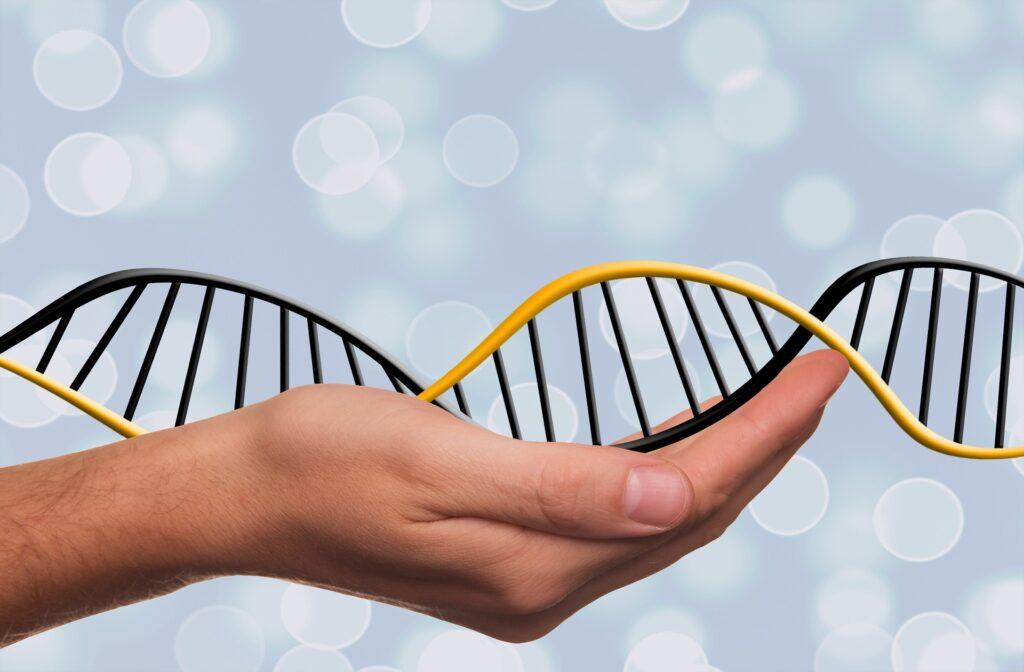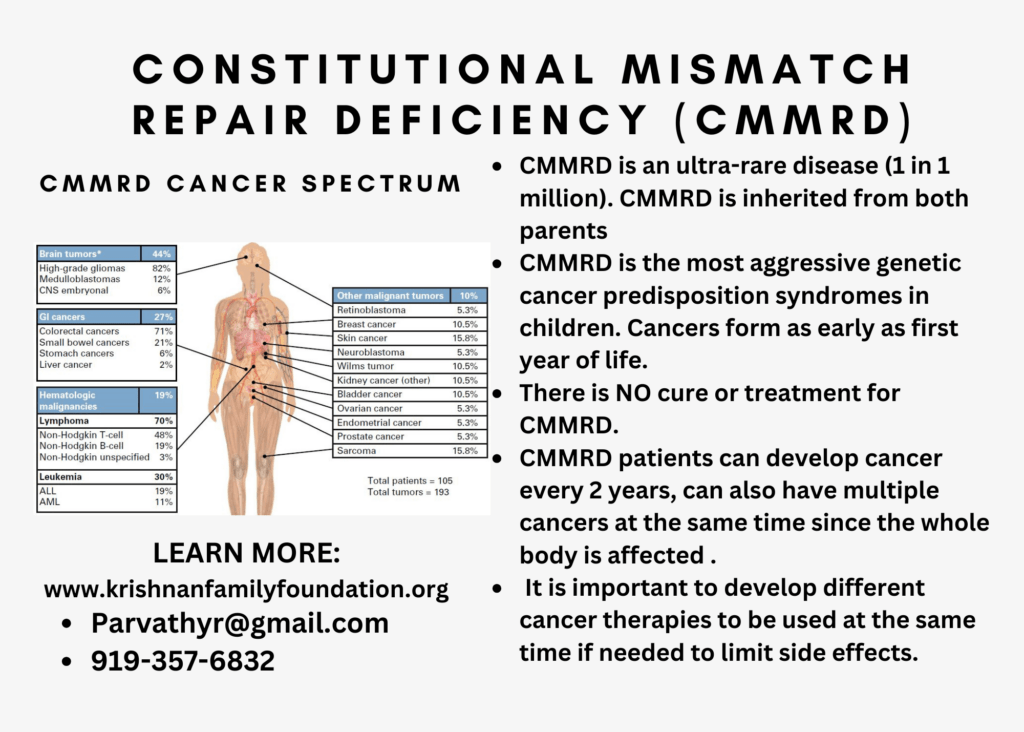About CMMRD

What is Constitutional Mismatch Repair Deficiency (CMMRD)?
Constitutional Mismatch Repair Deficiency (CMMRD) is a hereditary cancer predisposition syndrome. All of us have genes called checkpoint inhibitors – they help our body recognize abnormal cells (like cancer cells) from healthy cells. When these genes are altered or are abnormal they make it difficult for the cells in our body to repair themselves. When our cells are damaged or new cells are formed without being checked they result in cancer. Childhood risk for all cancers especially GI cancers, brain tumors and T-cell lymphomas among others remain high.

What makes CMMRD different from Mismatch Repair Deficiency (MMRD) found in Lynch syndrome?
An individual with Lynch syndrome has one copy of a defective gene and one normal gene. Individuals with CMMRD have 2 copies of defective genes (one from each parent). The lifetime risk for someone with Lynch syndrome is higher than the normal population. This means that the possibility of having cancer increases as a person gets older.
Most individuals will be affected by cancer before they reach adulthood. Most children diagnosed with CMMRD usually present with advanced/metastatic cancers. Our children have homozygous EPCAM and from what we have been told our son is the only living entity known with this condition.
What is the risk for couples who both carry a mutation in their MMR gene to have a child with CMMRD?
You have a 25% chance of having a child with CMMRD, 50% chance of having a child with Lynch syndrome, and a 25% chance of having a child with neither. While this may seem like an anomaly our family had two children both with CMMRD.
As CMMRD puts children at risk for cancer from infancy, how early are children often diagnosed, and what triggers a diagnosis?
There is a huge range of children who have been diagnosed with CMMRD. As parents we are constantly and periodically looking at various articles/studies that have been published or have been spoken about. There have been some children who have been 2-years-old at the time of diagnosis (brain tumors). Hematological cancers have been diagnosed as young as 1 year of age. GI cancers have averaged 8-10 years on average. Our daughter had her first colonoscopy when she was 2-½ years old: at that time they removed 3 adenomatous polyps (high and low grade dysplasia). Most individuals with CMMRD do not survive until adulthood.
Aside from elevated cancer risks, are there other health issues someone with CMMRD is at risk for?
Cancer is a beast that can be compared to none. However, in addition to treatment for cancer, children with CMMRD have to undergo significantly more surveillance (in addition to treatments). Scans every 3-6 months in addition to blood work are generally considered “normal.” When presented with GI cancers children could potentially have scopes every 3 -6 months and surgery periodically to remove cancerous lesions.
All of this repeated testing, surgical intervention can lead to secondary medical conditions that are equally challenging and non-responsive to traditional treatments. There is a lot of deconditioning, poor strength that a child has when they undergo anesthesia, surgery and long hospital stays. Physical development is affected, so is their mental and emotional health. Children often feel socially isolated from their peers. Unlike traditional cancer treatments children with CMMRD do not have an end of treatment. While they may finish treatment for one cancer (if they are lucky) they will continue to have monitoring and potential cancer recurrences soon after.
Our child has had significant motility disorder after his colectomy. He has had to have a number of medications to help wake up his gut. He has also had massive bleeding, pancreatitis, abdominal pain, malnutrition (requiring TPN), depression and PTSD related to hospital procedures.
